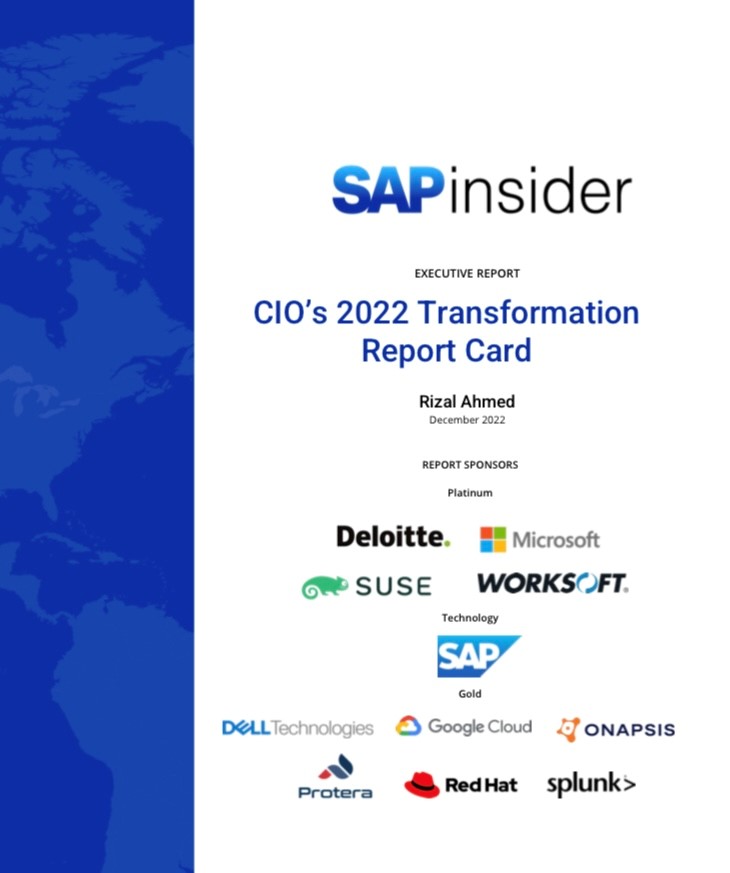Management
SAPexperts/Financials
While the switch to International Financial Reporting Standards (IFRS) is getting all the attention, the two boards that govern US and international accounting rules are mulling another change that could have a big impact on businesses that lease equipment. If passed, the proposal could add significant complexity to the way leases are accounted for at companies running SAP systems.
“I am certain that this will be an issue for SAP customers. If they’re using SAP Financials and Asset Accounting, they’re going to have to reinvestigate how they track and account for their leased assets because the requirements just got significantly more difficult,” says Nathan Genez, managing partner of Serio Consulting.
The International Accounting Standards Board (IASB) and the US Financial Accounting Standards Board (FASB) believe the use of operating leases hides much of the $760 billion leasing market from corporate balance sheets. To ensure that the value of each lease is properly accounted for, the two boards have proposed eliminating operating leases altogether.
“The boards propose that lease accounting should be based on the principle that all leases give rise to liabilities for future rental payments and assets (the right to use the leased asset) that should be recognized in an entity’s statement of financial position. This approach is aimed at ensuring that leases are accounted for consistently across sectors and industries,” the two boards said in a joint statement.
The current proposal applies only to lessees. The boards have pledged to alter the rules for lessors at a later date.
What it Means for Your SAP Environment
Companies that use SAP to manage accounting processes are likely to experience significant upheaval if the proposed rule change is accepted. Companies that only use operating leases to account for leased computers, vehicles, and other equipment would feel the brunt of the change.
“If this change goes through, you will have to account for the asset itself, set up a fixed asset master record, record the net present value of that asset — which is the discounted sum of all lease payments over the term — and you have to set up the liability for it and record your monthly payments against that liability,” says Thomas Michael, president and CEO of Michael Management Corporation.
Companies that already manage some leases in the asset accounting system would have an easier time adjusting to the change, according to Michael, but they still must go through the process of adding each operating lease to the asset accounting system and building a corresponding entry in the General Ledger to account for the liability.
The proposed change would affect more than just the accounting group, however. Because lease contracts and equipment are handled by multiple groups, the change could force companies to alter their business processes for dealing with leases.
For example, consider a company that currently leases laptops and accounts for them under operating lease rules. That lease would not be managed by the asset accounting group, but the laptops themselves would likely be tracked by an IT group in charge of the equipment.
“They’ll still have to do that, but now the asset accounting group needs to track them as assets,” says Michael. “Ideally you would link that asset with the equipment master record so you know where these individual pieces of equipment are. Once the asset accounting department does that, there’s a monthly recurring charge that is handled by the accounts payable department. Then another group or department has to manage those leases to make sure they stop paying after the lease term is up and the account is closed out.”
Genez says the change would affect other groups as well, since the shifting standard would require a change in data entry procedures.
“SAP ERP is highly integrated, which is great for automation and drill-back reporting, but some companies have processes that are inherently not integrated — usually because of location or process ownership issues,” he says. “If we have to account for leases differently, we have to consider how that data is fed to us. Is it from procurement? Then they now have a greater burden to mark and tag records in a way that we can categorize them correctly. Does it come from a project group or some external system? I think the integration aspect is big.”
What You Can Do About It
The FASB and IASB have published a discussion paper called Leases: Preliminary Views covering the proposed change. The boards will accept comments on the proposal until July 17, 2009. They have not set an effective date for the proposal.
In the meantime, experts recommend several steps you can take to prepare for the possible change.
1. Figure out where you stand
In order to understand how the proposed change would affect your systems and processes, you have to first understand your company’s current lease situation.
“The first thing you have to do is assess your current lease contracts and obligations, and figure out which are capital versus operating leases,” says Michael. “The capital leases are already on your books and you probably have a procedure around them already. You have to identify your operating leases — all the stuff you don’t put on your balance sheet — and figure out what kind of dollar amounts you’re talking about. It will make your overall financial picture less rosy.”
2. Review your procedures
Consolidating all operating leases into your existing capital leasing processes can be tricky, says Michael.
“You have to ask how you want to treat a lease that’s now a capital lease. Who sets up the asset? Who tells accounts payable? Who tells IT? How do they get linked together?” he says. “Once you have the business requirements in place, you can go into the usual phases for any SAP implementation project.”
If your company has no existing procedures for capital lease accounting, you will have to treat the change as an SAP project.
“Those companies will have to do the most configuration work . They’ll have to set up new policies, procedures, user training — all the things you need to do when you introduce new functionality or new features,” says Michael.
3. Alert management
At most companies, the fixed asset accounting group doesn’t warrant the same attention from upper management as other areas, such as a global reporting group or a revenue-producing unit, says Genez. However, because the proposed changes will have a fundamental effect on the balance sheet at most companies, now is the time to be heard.
“Industries like oil and gas, heavy manufacturing, and heavy utilities are capital-intensive companies that pay a lot of attention to their fixed asset requirements. Issues like capitalization procedures, depreciation conventions, and tax reporting are closely watched by all relevant parties. One of the biggest items on their P&L is depreciation. The biggest item on their balance sheet is their fixed assets base. Any time you have a change in these areas, it’s a material item. This is one of the few times that something is going to initiate from us,” he says.
Davin Wilfrid
Davin Wilfrid was a writer and editor for SAPinsider and SAP Experts. He contributed case studies and research projects aimed at helping the SAP ecosystem get the most out of their existing technology investments.
If you have comments about this article or publication, or would like to submit an article idea, please contact the editor.






